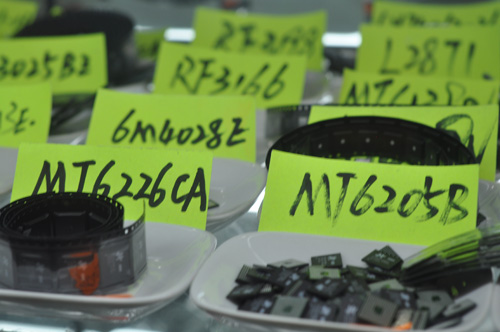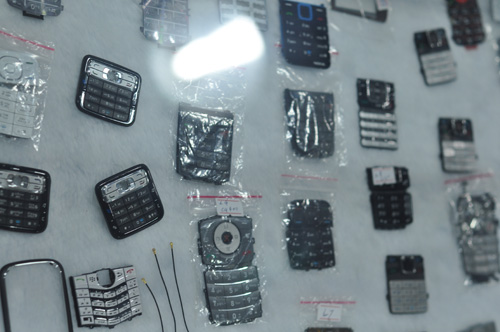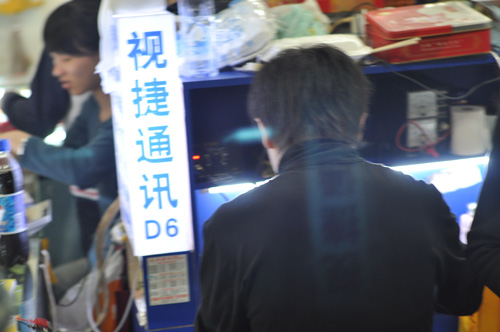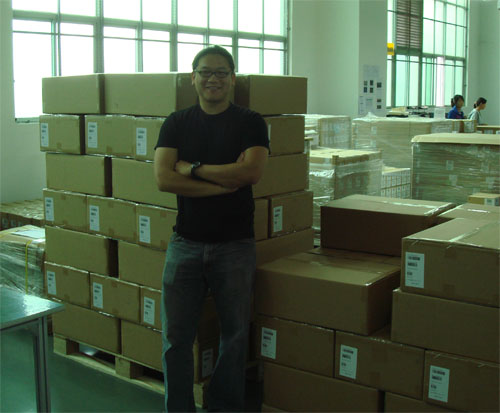The shanzhai of China are a tech trend to keep an eye on. Typically dismissed by popular press as simply the “copycat barons from China”, I think they may have something in common with Hewlett and Packard or Jobs and Wozniak back when they were working out of garages. I’ve heard quite a few stories about the shanzhai while on my most recent trip to China, some of which I will share here.
First, let’s try to understand the cultural context of the word shanzhai. Shanzhai (山寨) comes from the Chinese words “mountain fortress”. The literal translation is a bit misleading. The English term “fortress” connotes a fortified structure or stronghold that is large, perhaps conjuring imagery of castle turrets and moats. On the other hand, the denotation simply states that it is simply a fortified place. This latter denotation is closer to the original meaning from Chinese; in fact, the fortress they are referring to is closer to a cave or guerrilla-style hideout. In its contemporary context, shanzhai is a historical allusion to the legends that dwelled within. One such legend is the 12th-century story of the 108 bandits of Song Jiang. It is still a popular tale today; my father recognized it instantly when I asked him about it. A friend of mine described Song Jiang as a sort of Robin Hood meets Che Guevara; Song Jiang was a rebel and a soldier of fortune, yet selfless and kind to those in need.
The contemporary shanzhai are rebellious, individualistic, underground, and self-empowered innovators. They are rebellious in the sense that the shanzhai are celebrated for their copycat products; they are the producers of the notorious knock-offs of the iPhone and so forth. They individualistic in the sense that they have a visceral dislike for the large companies; many of the shanzhai themselves used to be employees of large companies (both US and Asian) who departed because they were frustrated at the inefficiency of their former employers. They are underground in the sense that once a shanzhai “goes legit” and starts doing business through traditional retail channels, they are no longer considered to be in the fraternity of the shanzai. They are self-empowered in the sense that they are universally tiny operations, bootstrapped on minimal capital, and they run with the attitude of “if you can do it, then I can as well”.
An estimate I heard places 300 shanzhai organizations operating in Shenzhen. These shanzai consist of shops ranging from just a couple folks to a few hundred employees; some just specialize in things like tooling, PCB design, PCB assembly, cell phone skinning, while others are a little bit broader in capability. The shanzai are efficient: one shop of under 250 employees churns out over 200,000 mobile phones per month with a high mix of products (runs as short as a few hundred units is possible); collectively an estimate I heard places shanzhai in the Shenzhen area producing around 20 million phones per month. That’s an economy approaching a billion dollars a month. Most of these phones sell into third-world and emerging markets: India, Africa, Russia, and southeast Asia; I imagine if this model were extended to the PC space the shanzhai would easily accomplish what the OLPC failed to do. Significantly, the shanzai are almost universally bootstrapped on minimal capital with almost no additional financing — I heard that typical startup costs are under a few hundred thousand for an operation that may eventually scale to over 50 million revenue per year within a couple years.
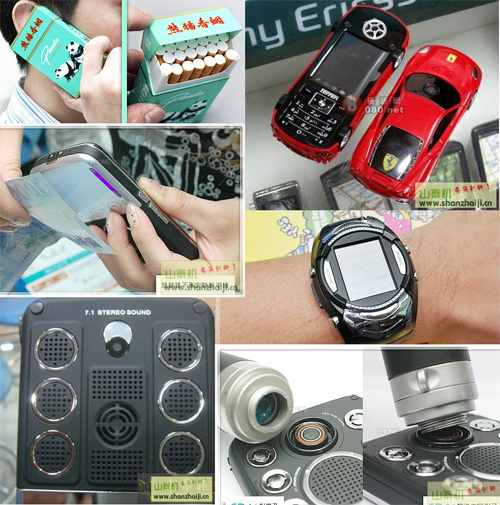
Significantly, they do not just produce copycat phones. They make original design phones as well, as documented in this PDF (it is in Chinese, but the pictures are cool; the collage above is ganked from the PDF). These original phones integrate wacky features like 7.1 stereo sound, dual SIM cards, a functional cigarette holder, a high-zoom lens, or a built-in UV LED for counterfeit money detection. Their ability to not just copy, but to innovate and riff off of designs is very significant. They are doing to hardware what the web did for rip/mix/burn or mashup compilations. The Ferrari toy car meets mobile phone, or the watch mixed with a phone (complete with camera!) are good examples of mashup: they are not a copies of any single idea but they mix IP from multiple sources to create a new heterogeneous composition, such that the original source material is still distinctly recognizable in the final product. Also, like many web mashups, the final result might seem nonsensical to a mass-market (like the Ferrari phone) but extremely relevant to a select long-tail market. Interestingly, the shanzhai employ a concept called the “open BOM” — they share their bill of materials and other design materials with each other, and they share any improvements made; these rules are policed by community word-of-mouth, to the extent that if someone is found cheating they are ostracized by the shanzhai ecosystem.
To give a flavor of how this is viewed in China, I heard a local comment about how great it was that the shanzhai could not only make an iPhone clone, they could improve it by giving the clone a user-replaceable battery. US law would come down on the side of this activity being illegal and infringing, but given the fecundity of mashup on the web, I can’t help but wonder out loud if mashup in hardware is all that bad. I feel there is definitely a bias in the US that “if it’s strange and it happens in China it must be bad”, which casts a long shadow over objective evaluation of new cultural phenomenon that could eventually be very relevant to the US.
In a sense, I feel like the shanzhai are brethren of the classic western notion of hacker-entrepreneurs, but with a distinctly Chinese twist to them. My personal favorite shanzhai story is of the chap who owns a house that I’m extraordinarily envious of. His house has three floors: on the top, is his bedroom; on the middle floor is a complete SMT manufacturing line; on the bottom floor is a retail outlet, selling the products produced a floor above and designed two floors above. How cool would it be to have your very own SMT line right in your home! It would certainly be a disruptive change to the way I innovate to own infrastructure like that — not only would I save on production costs, reduce my prototyping time, and turn inventory aggressively (thereby reducing inventory capital requirements), I would be able to cut out the 20-50% minimum retail margin typically required by US retailers, assuming my retail store is in a high-traffic urban location.
Those who read this blog have probably seen my posts about the markets in Shenzhen. I always had a theory that at some point, the amount of knowledge and the scale of the markets in the area would reach a critical mass where the Chinese would stop being simply workers or copiers, and would take control of their own destiny and become creators and ultimately innovation leaders. I think it has begun — these stories I’m hearing of the shanzhai and the mashup they produce are just the beginning of a hockey stick that has the potential to change the way business is done, perhaps not in the US, but certainly in that massive, untapped market often referred to as the “rest of the world”.



